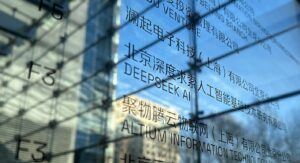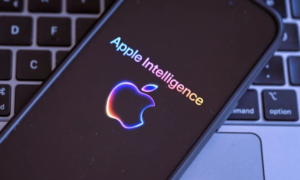DeepSeek, ChatGPT, and the Battle for Technological Dominance

The Rise of DeepSeek and Its Impact on the AI Industry
On January 20, 2025, the Chinese tech firm DeepSeek unveiled its first AI model, DeepSeek-R1. A week later, in an unexpected turn of events, Nvidia, a prominent AI technology company, saw its market value drop by $589 billion, marking the largest single-day loss in market capitalization in history. The reason? DeepSeek’s chatbot was significantly cheaper to produce.
DeepSeek’s Cost Advantage
While OpenAI reportedly invested around $100 million in developing its chatbot, ChatGPT, DeepSeek claimed to have accomplished this feat for just $5.6 million. The exact methods behind DeepSeek’s cost-effective creation remain unclear. However, OpenAI has acknowledged that there might be ongoing investigations into whether DeepSeek "inappropriately distilled" their models to gain such an advantage.
What Does "Distillation" Mean in AI?
The term "distillation" in artificial intelligence refers to the process of training a simpler model using the outputs of a more complex one. Originally, it aimed to reduce the computational load while maintaining efficiency. This method is commonly used in the AI industry, allowing developers to streamline their models for better performance.
Major Players in AI and Their Influence
According to Louis Tompros, a law lecturer, the AI industry comprises three main categories: text-based, visual-based, and video-based AI. Key players in this sector include:
- OpenAI: Developers of ChatGPT, DALL-E, and other AI models.
- Google, Microsoft, Meta, and Apple: Offering various consumer-focused AI systems.
- Hardware Firms: Nvidia, IBM, and Intel supply the necessary tech to train AI models.
Historically, these companies assumed that high-powered computing technology was essential for developing advanced AI systems. Therefore, DeepSeek’s emergence was surprising, as it challenged this consensus by delivering an advanced chatbot without the typical hardware support that many believed was essential.
Questions Surrounding DeepSeek’s Development
Despite DeepSeek’s impressive launch, several questions linger, particularly regarding how it managed to develop its model under current regulations that restrict high-powered U.S. chips from reaching China. Some analysts suggest DeepSeek may have used a distillation process involving OpenAI’s models.
DeepSeek’s chatbot has explicitly stated that OpenAI played a role in its development, raising further speculation about the level of dependency between the two systems.
Potential Legal Implications
If DeepSeek did utilize OpenAI resources, several legal frameworks might come into play:
Copyright Law: Currently, copyright does not extend to AI-generated content. OpenAI may struggle to claim rights under copyright law if DeepSeek used rapid queries or public data for training.
Patent Law: While an increase in AI patent applications is noted, resolving potential patent infringements may take time as verification is typically lengthy.
Trade Secrets: If DeepSeek acquired information improperly or engaged in corporate espionage, it could be held liable under trade secret laws.
- Contract Law: Most AI platforms, including those of OpenAI, have terms of service that could be argued as a contract. Breaching these terms might result in legal consequences.
Arbitration and Resolutions for Disputes
If a legal challenge were to arise, disputes would likely be handled through arbitration, especially if specified in the terms of service. Arbitration often provides a quicker and internationally enforceable resolution than traditional court proceedings.
However, it remains uncertain how courts in China may respond to such U.S.-based agreements, as enforcing these contracts against a local entity poses significant challenges.
The Impact of DeepSeek on Shareholder Value
DeepSeek’s launch sent shockwaves through Wall Street, primarily affecting the stock values of major AI firms. Investors, who may feel blindsided by DeepSeek’s rapid rise, might consider filing shareholder lawsuits due to perceived threats not explicitly acknowledged by companies.
The industry now faces the possibility of numerous legal challenges, including potential copyright claims from various content creators over the training data used in AI systems.
Future Considerations
As the legal landscape in the AI sector continues to evolve, the emergence of precedents in court cases could significantly redefine what constitutes fair use in AI training. With ongoing litigation, including high-profile cases like that of the New York Times against OpenAI, the implications for the future of AI development, regulation, and competition will be closely scrutinized by experts and stakeholders alike.
Furthermore, with growing fear over national security concerns regarding AI technologies originating from foreign nations like China, regulation and oversight may shape the future dynamics of AI innovation.




